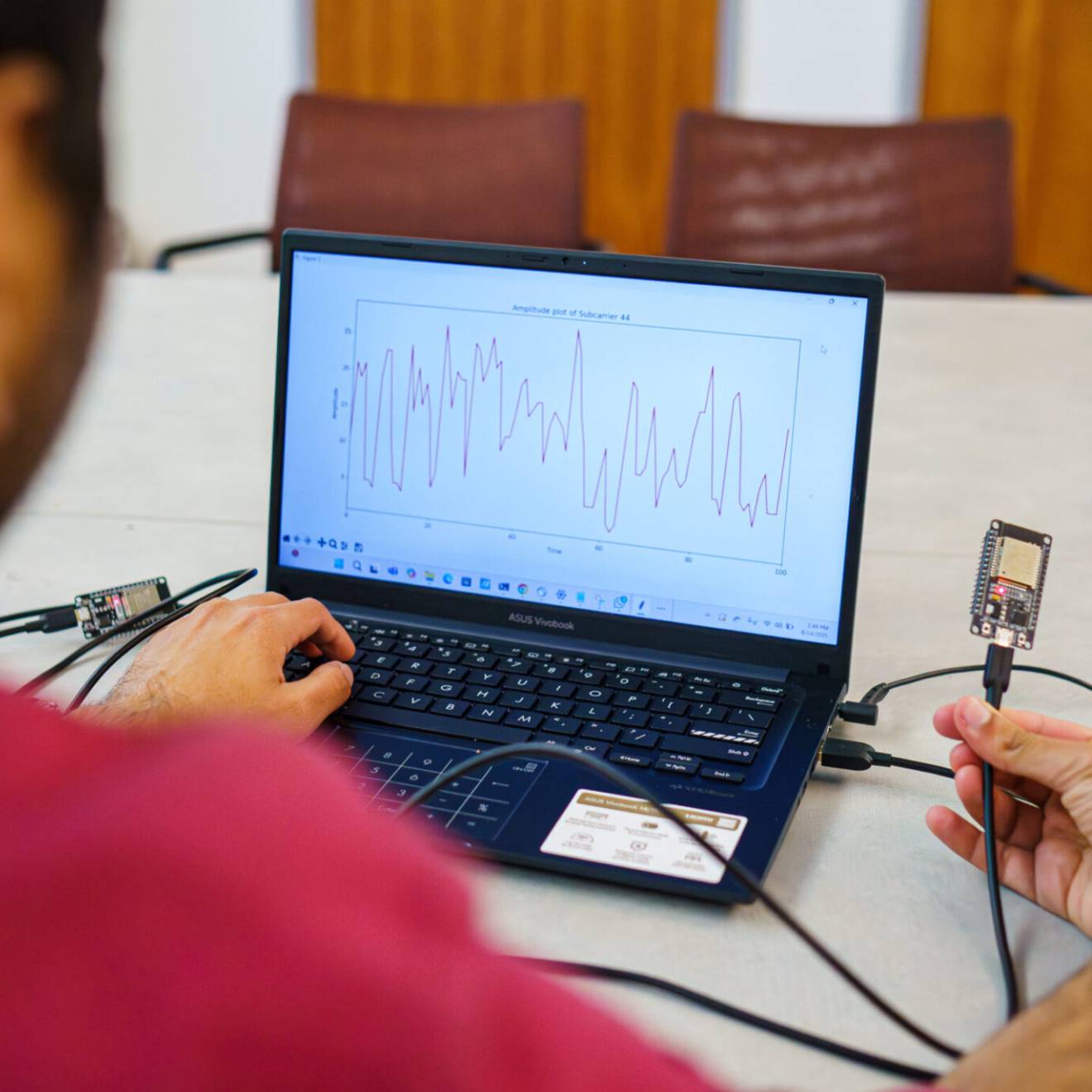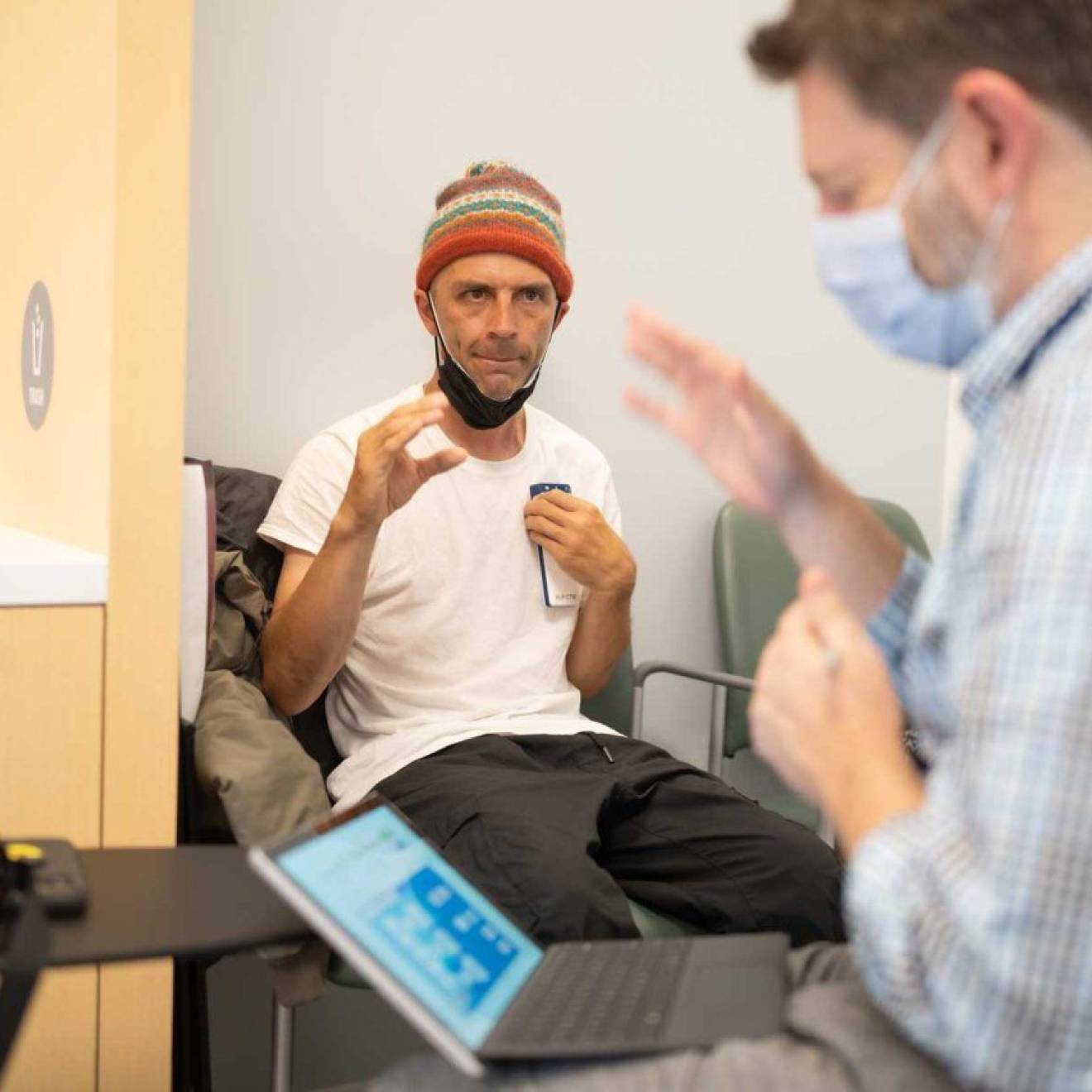UC Davis

Today, UC Davis is a powerhouse with almost $800 million in research funding. Since its earliest days — opening its doors in 1908 — UC Davis scientists and engineers have been making breakthroughs that impact our lives, from expanding agricultural capabilities to understanding DNA and mental disorders. Check out what UC Davis has done to help the world eat and drink better, survive serious illnesses and live in a healthier environment.
Food, wine and agriculture
1. Blazing the way for chardonnay, 1950s-1960s
Professor Harold Olmo developed 30 grape varieties, and his study of the chardonnay grape led to its economic viability. Chardonnay is now California’s most important wine grape variety, cultivated on nearly 100,000 acres throughout the state. The Department of Viticulture and Enology has developed a total of 10 wine grape varieties, 15 table grape varieties and five juice grape varieties. Seven rootstocks that are resistant to various diseases and pests also have been developed by either Olmo or current geneticist and breeder professor Andrew Walker.
2. Mechanical tomato harvesting, 1940s-1960s
In the 1940s, UC Davis vegetable crops researcher Jack Hanna started breeding new tomato varieties that could withstand mechanical harvesting and be used for canning, tomato paste and pasta sauce. Engineers Coby Lorenzen and Steven Sluka joined Hanna to develop a mechanical tomato harvesting system, later commercially developed by the Blackwelder Manufacturing Co. The machine arguably saved California’s processed tomato industry during the 1960s, halving harvesting costs and leading to large increases in tomato acreage and tonnage within California and throughout the world. In 2005, the UC-Blackwelder tomato harvester was designated a historic landmark by the American Society of Agricultural and Biological Engineers.
3. Plant immunity gene, 1992
Working in rice, professor Pamela Ronald discovered the Xa21 gene that is key to disease resistance in plants. This plant gene was later found to be related to similar disease resistance genes, called “toll-like receptors,” in mammals and insects. Genetic discoveries like this are crucial for the development of hardier, more productive strains of rice, which is the staple food for more than half the world's population. The discovery of these genes in animals was awarded the Nobel Prize in physiology or medicine in 2011.
4. Breeding better bees, 1940s
Honeybees are vital to much of agriculture, but bee breeding was largely a matter of chance until professor Harry H. Laidlaw developed techniques to artificially inseminate queen bees. Laidlaw’s work made selective breeding of bees possible for the first time, and his methods are still used worldwide. In 2000, the UC Davis Bee Biology Laboratory was named the “Harry H. Laidlaw Honey Bee Research Facility” in his honor.
Social sciences
5. ‘Baby Signs,’ 1990s
The Early Childhood Laboratory in the College of Agricultural and Environmental Sciences was the first infant-toddler program to pilot a technique for communicating with children too young to verbally express themselves through “Baby Signs” modified from American Sign Language. Research on the effectiveness of the gestures was pioneered in the 1990s by UC Davis psychology professor emerita Linda Acredolo and Susan Goodwyn, formerly of UC Davis and now a professor emerita at California State University, Stanislaus. Since then, the use of “Baby Signs” has become increasingly popular among parents and early childhood caregivers.
Biomedical sciences and medicine
6. One-bead-one-compound
Kit Lam, professor and chair of the UC Davis Department of Biochemistry and Molecular Medicine, invented the “one-bead-one-compound” chemistry method that allows for rapid screening of millions of chemicals at a time to identify those that bind to diseased cells. The tool is advancing the early detection and precise delivery of treatments for cancers including brain, breast, prostate and pancreatic cancer and lymphoma. In addition, the method, part of a field called combinatorial chemistry, is helping the discovery of new agents for studying diseases to improve diagnosis and treatment. Combinatorial chemistry is now an indispensable tool in drug development and chemical research, and Lam’s research may contribute to solving many medical problems.
7. Fragile X–associated tremor/ataxia syndrome (FXTAS)B
In a study published in the journal Neurology in 2001, a UC Davis MIND Institute team led by Randi Hagerman, Endowed Chair in Fragile X Research, described a new condition, fragile X-associated tremor/ataxia syndrome (FXTAS). This late-onset neurodegenerative disorder is associated with problems of movement, memory and the autonomic nervous system. Hagerman, a physician and MIND Institute medical director, had initially identified FXTAS two years earlier, after seeing patients in her clinical practice. At the same time, fragile X team member Flora Tassone, professor of biochemistry and molecular medicine, discovered that increased activity of the gene FMR1 gene dysregulation was the basis for the disorder. FXTAS is related to fragile X syndrome, the most common known cause of inherited intellectual disability and the leading single-gene cause of autism spectrum disorder. Prior to its discovery, FXTAS often was misdiagnosed as Alzheimer’s disease, Parkinson’s disease or other neurological disorders including neuropathy. Hagerman and Tassone’s current work is focused on finding treatments for FXTAS and facilitating a better understanding of all age-related neurodegenerative processes.
8. AIDS-like diseases in monkeys and cats, 1980s
In the early 1980s, School of Veterinary Medicine researchers at the California National Primate Research Center at UC Davis investigated an unusual outbreak of immune deficiency that was occurring in a group of rhesus monkeys housed at the center. About the same time, a new and deadly disease was appearing around the world that would become known as acquired immune deficiency syndrome or AIDS. In 1984, UC Davis researcher Nicholas Lerche demonstrated that the immune deficiency disorder in the rhesus monkeys resulted from an infectious agent, named simian retrovirus. This led to the identification of another retrovirus — simian immunodeficiency virus. And in the early 1990s, veterinary researchers at UC Davis identified a similar viral disease in cats, which would become known as feline immunodeficiency virus. Today, researchers at UC Davis use the SIV model to study treatments and vaccines for HIV/AIDS.
9. Real-time imaging of single DNA enzymes, 2001
Stephen Kowalczykowski and the late Ron Baskin in the College of Biological Sciences pioneered a technique for watching a single enzyme unwinding a DNA molecule in real time. The work has led to new discoveries in the mechanics of how DNA is copied and repaired, processes that are vitally important to understanding the origins of cancer and birth defects. Kowalczykowski’s laboratory was also one of two at UC Davis, along with that of Wolf-Dietrich Heyer, to isolate the protein made by the breast cancer gene BRCA2.
Biology
10. Chloroplasts contain DNA, 1959
Look in a high school biology textbook, and you’ll read that chloroplasts, the structures inside plant cells that carry out photosynthesis, contain their own genetic material separate from the cell’s nucleus. That discovery was made at UC Davis in 1959 by plant biologists Ralph Stocking and Ernest Gifford. Biologists think that chloroplasts were once independent organisms that in the ancient past formed a symbiosis with the ancestors of modern plants.
Engineering
11. Plug-in hybrid electric vehicles, 1980s to present
Widely known as the “father of the plug-in hybrid,” professor Andrew Frank has championed this approach to fuel-efficient vehicles that combines gasoline engines with electric motors running on rechargeable batteries. Frank’s students built a number of prototype vehicles for the U.S. Department of Energy “FutureCar” and “FutureTruck” competitions, and this approach is now in use by major auto manufacturers.
Environment
12. Getting lead out of gasoline, 1970s
Thomas Cahill and colleagues at the Crocker Nuclear Lab used the lab’s cyclotron to study air quality, among other things. In the 1970s, Cahill’s team provided evidence showing how lead pollution spread from freeways over neighborhoods, leading then-Gov. Jerry Brown to introduce the first controls on lead as a gasoline additive.
13. Saving Lake Tahoe, 1868 to present
UC physicist John Le Conte took the first scientific measurements of Lake Tahoe’s clear blue waters in 1868. A century later, the Tahoe Research Group, founded by UC Davis professor Charles Goldman, began regular monitoring of the lake. This work by the UC Davis Tahoe Environmental Research Center continues today. More than 40 years of data show the effects of human activity on the lake, and this information has been the basis for nearly all major environmental and planning decisions in the Lake Tahoe basin.

